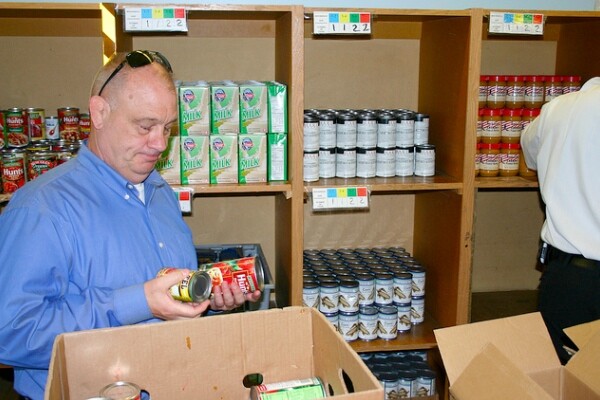How Food Stamp Cuts Affect L.A. Food Banks

When $5 billion was cut from the country's SNAP program in November, it didn't take a crystal ball and flamboyant headwear to predict how the loss would "trickle down" to other arenas. Small, independent grocers who rely heavily on customers using food stamps might not be able to withstand the blow and be forced to close. The entire economic landscape would see a general decline, as low-income families would be forced to stretch their tiny paychecks even further; money allotted towards anything other than food would be seen as a "luxury." And, of course, shelters and soup kitchens would see such dramatic spikes in attendance that they wouldn't be able to keep food on their shelves for long.
Now that we're a few months into the cuts, it's time to see if this last prediction is becoming a reality. To find out, I called up the Los Angeles Regional Food Bank.
Perhaps the best place to start is explaining just what the L.A. Regional Food Bank does. For the past 40 years, they have been taking donations (in the form of food and/or money) and delivering meals to various agencies around L.A. County who, in turn, deliver the food to needy individuals in their community. They're middlemen of sorts, but without the crazy mark-up.
The "agencies" the food bank delivers to are programs like homeless shelters, soup kitchens, food pantries, Boys and Girls Clubs, and senior centers. Currently, they supply 670 agencies throughout L.A. County. Which seems like a lot. But, as Communications Director Jennifer Errico points out, that's not nearly enough to reach the demand.
"We have over 900 [agencies] on a wait list that want food from us," says Errico. "Demand is so much greater than what we can support. Unless there's a huge influx of money or donations, we just can't support them."
What happens when the food bank's cabinets are bare? Local food pantries are forced to rely on help from local markets, grocers, and kind-hearted individuals in order to hit the numbers necessary to provide assistance to everyone entering the pantry. "But they can't meet the need obviously that way," says Errico. "So, some places just choose not to have food distribution at all."
And this was life before the food stamps cuts came to pass.
"Under the old food stamp benefits, people couldn't squeak through to the end of the month," says Errico. "So, the last week of the month was when they would show up in line." And seeing as the first three weeks of the month saw a lower level of demand, while the lines would be longer, at least they'd generally have enough food to go around. "But now with the cuts, they'll make it about halfway through the month. We'll see an increase in demand halfway through the month, rather than just the end."
Essentially, then, the cut in food stamps has doubled the demand at food banks.
While there are ways for individuals to help assist the program -- Errico suggests donating food as well as money, pointing out that "for every $1, because of the leverage we have here, we can provide four meals" -- the main bit of news those working in food pantries (not just in L.A., but around the country) are waiting for is the 2014 Farm Bill.
"We're really holding our breath, because what will happen if we don't get government subsidies?" asks Errico. "This year we contributed 60 million pounds of food. If the government subsidies don't come in, we'll have less."
And having to continue doing more with even less is a recipe for hunger.


